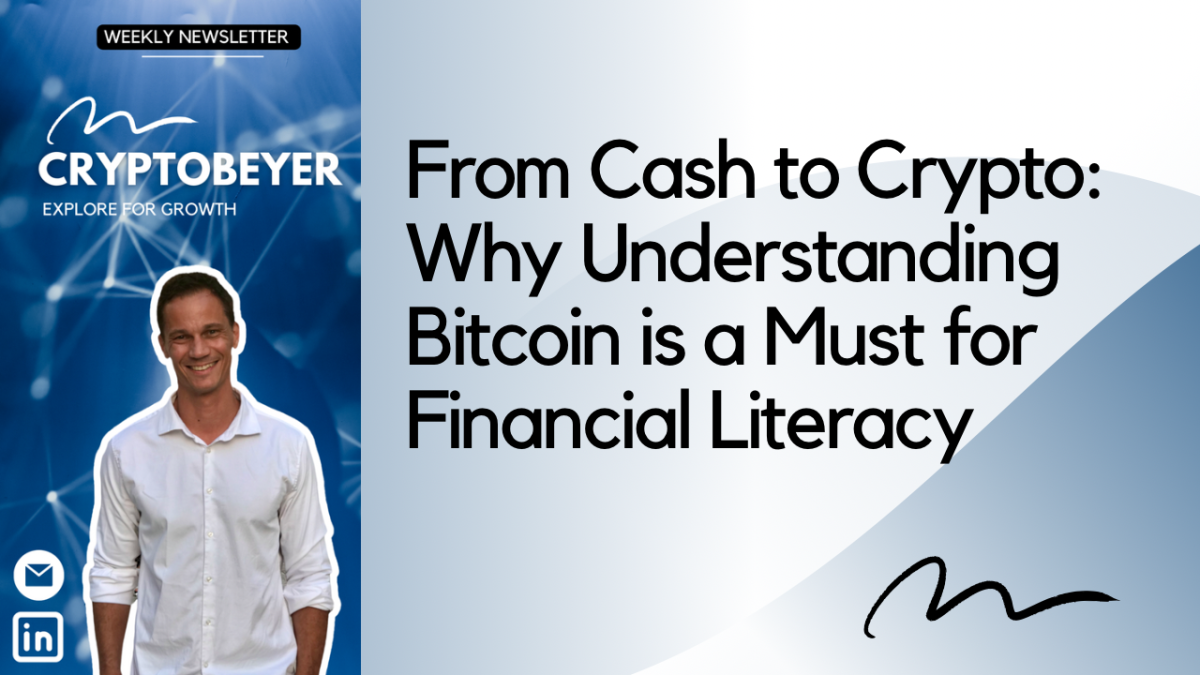As inflation rates surge and traditional financial systems face criticism, I am surprised by the lack of initiatives to inform people about how we can deal with these financial problems. Financial literacy is vital, and we need to equip adult and students with the knowledge they need to navigate the complexities of the modern financial landscape where crypto has become a part of.
I grew up in Sweden where the traditional financial system where considered the backbone of society. Working at a bank was prestigious and people generally had a high degree of confidence in government agencies. Only when inflation started to increase, and the cost-of-living skyrocket people started wondering what went wrong. The weak krona has contributed to a higher level of inflation in Sweden than in many other countries, which has eroded Swedish purchasing power. No it’s not as bad as the inflation in for example Turkey, but bad enough. In short, inflation, and a high-speed-hamster wheel turned many Swedes bitter. What to do?
Financial literacy nowadays need to involve knowledge about cryptocurrencies, and we should not be afraid to use unconventional approaches to teach future generations.
One example is El Salvador which is taking a pioneering step in introducing Bitcoin education into its public-school curriculum by 2024. The Ministry of Education of El Salvador has started a program that aims to educate students about the basics of Bitcoin, its history, and its potential uses. The initiative is expected to help students understand the benefits of digital currencies and blockchain technology. The program will be free of cost and will be available to all public schools in El Salvador.
What can Bitcoin teach us about finance?
Inflation, the persistent increase in the general price level of goods and services over time, is a concept that has become all too familiar in recent years. It erodes the purchasing power of money, affecting everyone from consumers to investors. Teaching students about inflation is not new, but the current educational methods often fall short in explaining its nuances and real-world implications. After all, I know many adults that have a limited knowledge of inflation.
Bitcoin, as a decentralized digital currency, offers a unique lens through which to view inflation. Its fixed supply of 21 million coins and the process of “halving” (reducing the reward for miners) every four years create an intriguing counterpoint to traditional fiat currencies subject to inflationary pressures. Incorporating Bitcoin into the curriculum can provide students with a real-world example of a deflationary currency and spark critical discussions about the broader failing economic system. No wonder interest in crypto currencies spike in nations that are hit hard by inflation.
Traditional financial systems, including banks and centralized monetary authorities, have long been the backbone of global finance. However, they are not without their flaws. Financial crises, income inequality, corruption, greed, and concerns about monetary policy transparency have cast a shadow on these institutions. Critics argue that these systems can be vulnerable to manipulation, lack inclusivity, and may not always serve the best interests of the average citizen.
Bitcoin, as a decentralized digital currency operating on blockchain technology, offers an alternative to these traditional systems. It emphasizes transparency, security, and financial autonomy. It’s a freedom project that limits greedy tampering by people. Students exposed to Bitcoin can explore the mechanics of money, financial systems, and the implications of centralization versus decentralization.
It’s obvious. Cash is dying. In an increasingly digital world, understanding cryptocurrencies and blockchain technology becomes a valuable skill for future generations. Bitcoin’s volatility and market dynamics can provide insights into investment strategies, risk management, and economic trends. Teaching the importance of secure private key management can instill financial responsibility and cybersecurity awareness. Bitcoin’s speculative nature and potential for high volatility should be addressed responsibly and seen as an opportunity to teach us about investing. Crypto is not just Bitcoin and the emergence of smart contract altcoins are prime examples of how the financial world will change. We need an accurate, unbiased, and well-rounded view of the cryptocurrency landscape.
The challenge lies in the entrenched mindset that traditional financial systems are the only valid or stable option. This can lead to resistance or reluctance to introduce Bitcoin as a subject of study. Additionally, some educators and policymakers may perceive Bitcoin as a disruptive force rather than an educational opportunity, which can further impede its inclusion in school curricula.
Foremost I would say that even a short education in cryptocurrencies and its potential impact in finance can be transformative. It offers a unique opportunity to foster critical thinking and digital literacy while preparing us for the evolving financial world. After all, education is about preparing us for what is coming, and the financial system is becoming fully digital. We don’t have to invest in Bitcoin to learn from it.

